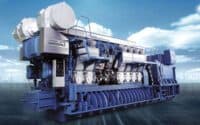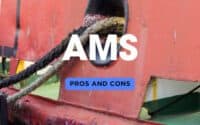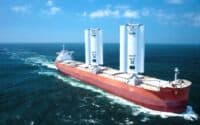Stevedoring Strategies: The Art of Breakbulk Shipping in the Modern Age

Stevedoring involves the crucial task of loading and unloading cargo from ships. In the context of breakbulk shipping, where cargo comes in various shapes and sizes—from machinery parts to sacks of grain—stevedores are essential. They ensure that each item is handled correctly, loaded efficiently, and secured safely.
* Please send feedback/suggestions to editor @ shipuniverse.com
The Complexities of Breakbulk Cargo Unlike container shipping, where cargo fits neatly into standardized boxes, breakbulk cargo can be unpredictable. Each piece might require different handling, making the job of stevedores complex. They need to plan meticulously, considering the cargo’s nature, to avoid damage and ensure everything fits together in the ship’s hold. This process not only requires physical labor but also sharp problem-solving skills.
Historical Context: The Evolution of Stevedoring
A Look Back Stevedoring has roots deep in maritime history, evolving from sheer manpower to the use of advanced machinery. Originally, the job was all about brute strength and manual labor, with longshoremen hauling cargo by hand.
Technological Transformation Over time, the introduction of tools like cranes and forklifts changed the game, reducing the physical strain and boosting efficiency. Today, technology continues to transform stevedoring, with software for planning loads and tracking cargo in real-time, making the process faster and safer.
Adapting to Global Trade and Fleet Management With the expansion of global trade and more sophisticated fleet management techniques, the role of stevedores has become more technical. The modern stevedore needs to understand logistics and technology as much as physical loading techniques. As ships grow larger and logistics become more complex, the efficiency of loading and unloading cargo directly impacts the shipping industry’s bottom line.
Current Practices in Stevedoring
Modern Methods in Loading and Unloading Breakbulk Cargo Today’s stevedoring practices blend traditional methods with advanced technology to handle the diverse challenges of breakbulk cargo. A key component is the use of specialized gear and machinery tailored to different types of cargo. For instance, heavy-lift cranes are employed for oversized items, while slings and straps are used for securing smaller, more delicate items. Additionally, stevedoring now often involves sophisticated software that helps plan the stowage of cargo to maximize space and maintain the ship’s balance.
Efficiency is paramount in these operations. Stevedores must ensure quick turnaround while maintaining safety standards to minimize the time ships spend in port. This requires not just physical tools but also effective communication and coordination among the dockworkers.
Case Studies: Efficiency in Action
- Port of Singapore – Jurong Port: Jurong Port in Singapore is a prime example of a modern multipurpose port with specialized stevedoring operations for breakbulk cargo. The port has entered into strategic partnerships with licensed stevedoring companies that have deep expertise in handling a diverse range of cargo, including metals, rubber, timber, and heavy machinery. These companies utilize a combination of sophisticated equipment and skilled labor to ensure safe, efficient, and cost-effective cargo handling. This integration of resources and expertise makes Jurong Port a key distribution hub and a significant player in industrial metal trading, leveraging its status with approved warehouse facilities within a Free Trade Zone area for seamless cargo clearances.
- Winstar Group – Singapore: The Winstar Group offers comprehensive stevedoring services within Singapore’s Jurong Port, specializing in handling outsized and heavy lift cargoes. Their operations cover everything from normal breakbulk to complex multi-modal projects, ensuring 24/7 cargo handling capabilities. This includes the use of specialized equipment and logistics services to accommodate the unique requirements of breakbulk cargo, which often involves complex loading and securing processes to prevent cargo damage.
- RTM Lines: RTM Lines provides expert breakbulk shipping and logistics services with specific provisions for heavy and oversized cargoes. They handle everything from machinery to industrial engines and steel coils, providing on-deck and below-deck stowage solutions. Their stevedoring teams are experienced in managing hazardous cargoes and obtaining special permits and customs clearances, ensuring a comprehensive service from port to port.
Technological Advancements in Stevedoring
The Role of Technology in Transforming Stevedoring Operations
Technology has dramatically transformed stevedoring, enhancing the efficiency, safety, and reliability of cargo handling processes. The integration of modern technologies into stevedoring operations allows ports to handle more cargo with greater precision and less physical strain on workers.
Specific Technologies Enhancing Efficiency and Safety
- Heavy-Lift Cranes: One of the most significant technological advancements in port operations is the use of heavy-lift cranes. These cranes can handle exceptionally large or heavy breakbulk cargo that traditional cranes cannot. They are crucial in ports where large industrial components, such as those used in wind turbines or large machinery, need to be loaded and unloaded. The use of these cranes not only speeds up the process but also reduces the risk of injury by minimizing the need for manual handling.
- Automated Tally Systems: Automated tally systems are used to track cargo as it is loaded and unloaded. These systems use digital tools and sensors to ensure accurate counts and help in maintaining real-time inventory control. This technology reduces human error and significantly speeds up the process of cargo handling by providing instant data to port operators and shipping companies.
- Real-Time Cargo Tracking: Real-time tracking systems use GPS and other technologies to monitor the location and status of cargo throughout the stevedoring process. This technology provides all stakeholders with up-to-date information on cargo location, which is essential for efficient logistics management. It enhances security by monitoring cargo movements and helps in quickly resolving any discrepancies during transit.
- Automated Guided Vehicles (AGVs): In some of the world’s leading ports, AGVs are used to transport containers and other cargo between the ship and the storage yard. These driverless vehicles are programmed to follow specific routes within the port, reducing the manpower needed and increasing safety by lowering the risk of accidents associated with manual driving.
- Port Management Systems (PMS): Advanced software systems integrate various operational processes at the port, from berth scheduling and cargo handling to workforce management. These systems enhance communication between different departments, improve operational transparency, and enable more effective use of resources.
Challenges in Modern Stevedoring
Common Challenges Faced by Stevedores
- Safety Issues: Stevedoring is inherently risky, with workers exposed to various hazards including heavy machinery, large cargo, and challenging weather conditions. Despite advancements in safety protocols, accidents involving machinery malfunctions or improper handling of cargo still occur. Ensuring worker safety remains a primary concern, requiring constant vigilance, training, and adherence to safety standards.
- Cargo Damage: Handling diverse and often delicate cargo presents significant challenges. Cargo damage can occur due to mishandling, improper stowage, or accidents during transit. This not only leads to financial losses but also affects the reputation of shipping and port operations. Implementing meticulous handling procedures and using technology to track and monitor cargo conditions are essential strategies to minimize these incidents.
- Logistical Inefficiencies: Efficient coordination of the numerous activities in a port is complex. Delays can occur due to several factors, such as scheduling conflicts, equipment failures, or inefficient workflow processes. These inefficiencies affect the turnaround time of ships and can increase operational costs significantly.
Environmental Impact of Stevedoring Operations
Stevedoring operations also have a considerable environmental footprint. The primary concerns include:
- Air Pollution: The use of heavy machinery and vehicles in ports often runs on diesel, contributing to air pollution. This is a significant health hazard for workers and nearby communities and impacts the overall environmental sustainability of port operations.
- Water Pollution: Handling cargo, especially hazardous materials, poses risks to water quality if spills occur. Additionally, the movement of ships can disturb sediments in water bodies, potentially releasing pollutants.
- Noise Pollution: The operations in ports generate considerable noise from machinery and cargo handling activities, affecting both wildlife and human populations in surrounding areas.
- Resource Consumption: Ports consume large amounts of energy and water, contributing to their environmental impact. The challenge is to manage these resources efficiently and integrate renewable energy sources where possible.
Best Practices for Ship/Fleet Owners in Stevedoring Operations
Strategies for Optimizing Stevedoring Operations
- Leverage Technology: Investing in the latest technology, such as automated systems for tracking and handling cargo, can significantly increase efficiency. Technologies like automated guided vehicles (AGVs), real-time cargo tracking, and advanced management systems can streamline operations and reduce turnaround times.
- Enhanced Planning and Coordination: Effective scheduling and cargo management are crucial. Utilizing advanced port management software to coordinate ship arrivals, cargo handling, and departures can minimize delays and maximize throughput.
- Regular Equipment Maintenance: Ensuring that all handling equipment is regularly maintained and updated can prevent operational delays caused by equipment failure, which is crucial for optimizing operational time and reducing costs.
Importance of Training and Safety Protocols
- Comprehensive Training Programs: Continuous training of stevedoring personnel on the latest safety practices and operational procedures is vital. This includes training on handling equipment, safety gear usage, and emergency response actions.
- Implementing Strict Safety Protocols: Developing and enforcing strict safety protocols can significantly reduce accidents and injuries. This involves regular safety drills, proper communication channels, and the use of personal protective equipment (PPE).
- Safety Certifications: Ensuring that all operations meet local and international safety standards can help in maintaining a safe working environment. Certifications like OSHA (Occupational Safety and Health Administration) for the U.S. or similar local regulations should be adhered to rigorously.
Choosing the Right Stevedoring Partners
- Assessing Capability and Reliability: When selecting stevedoring companies, assess their capability in handling the specific types of cargo your fleet carries. Look at their track record, equipment inventory, and the skill level of their workforce.
- Evaluating Financial Health and Stability: Ensuring that the stevedoring company is financially stable and has the resources to invest in technology and training can affect long-term partnerships.
- Impact on Shipping Efficiency and Cargo Integrity: The right stevedoring partner can dramatically impact your operational efficiency and the integrity of your cargo. Partners with a focus on precision handling and who follow best practices in cargo stowage and securing can minimize damage and loss, reducing claims and enhancing customer satisfaction.
- Collaborative Relationship: Foster a collaborative relationship with your stevedoring partners. Regular meetings, feedback sessions, and joint training programs can align operations and improve service delivery.
Future Trends and Innovations in Stevedoring
Emerging Trends in the Stevedoring Industry
- Sustainable Practices: Environmental sustainability is becoming increasingly important in the stevedoring industry. Ports are adopting greener practices, such as using electric and hybrid machinery, implementing solar and wind energy solutions, and enhancing waste management systems. These initiatives not only reduce the environmental impact but also improve operational efficiency and potentially reduce costs.
- Integration Machine Learning: Machine learning is being integrated into various aspects of stevedoring operations. These technologies are used for predictive maintenance of equipment, optimizing cargo loading patterns, and improving traffic management within ports. AI algorithms can analyze large datasets to forecast issues and suggest actions, enhancing decision-making processes.
- Automation and Robotics: The use of automated machinery and robots is expected to increase, handling routine tasks such as moving and stacking containers, which reduces the need for human intervention and lowers the risk of accidents. This automation extends to autonomous vehicles and drones for surveillance and inspection tasks.
- Digitalization and Data Analytics: Ports are becoming ‘smart’ through the use of IoT (Internet of Things) devices and big data analytics. This technology provides real-time insights into operations, enabling better resource management and operational decisions. Digital platforms for managing cargo documentation and customs clearances are also enhancing the speed and accuracy of administrative processes.
Predictions on How These Trends Will Shape the Future of Breakbulk Shipping
- Increased Efficiency and Reduced Delays: With advanced planning tools and automated equipment, the handling of breakbulk cargo is expected to become more streamlined. This will lead to faster turnaround times for ships and less idle time at ports.
- Enhanced Safety and Reduced Operational Risk: As AI and machine learning provide better predictive insights, the industry can anticipate and mitigate potential safety hazards before they occur. This will lead to safer working conditions and less risk of cargo damage.
- Cost Reduction and Operational Optimization: Through automation and digitalization, stevedoring operations can achieve significant cost savings. Automated systems reduce labor costs and improve the accuracy and speed of cargo handling, while AI optimizes resource allocation and scheduling.
- Environmental Impact: The shift towards sustainable practices and the adoption of green technologies will help reduce the carbon footprint of stevedoring operations. This not only complies with global environmental standards but also aligns with the increasing demand from consumers and businesses for greener supply chains.
As the stevedoring industry continues to evolve, driven by advancements in technology and a strong emphasis on sustainability, the future of breakbulk shipping looks promising. The integration of machine learning, and sustainable practices is set to revolutionize cargo handling, making it safer, more efficient, and environmentally friendly. For ship and fleet owners, staying ahead in this dynamic environment means embracing these innovations, fostering partnerships with forward-thinking stevedoring companies, and continually adapting to the emerging trends that are shaping the maritime world.

Do you have a Maritime Product or Service that may be of interest to Shipowners? Tell us about it here!
Do you have feedback or insights? Please reach out to editor @ shipuniverse.com



